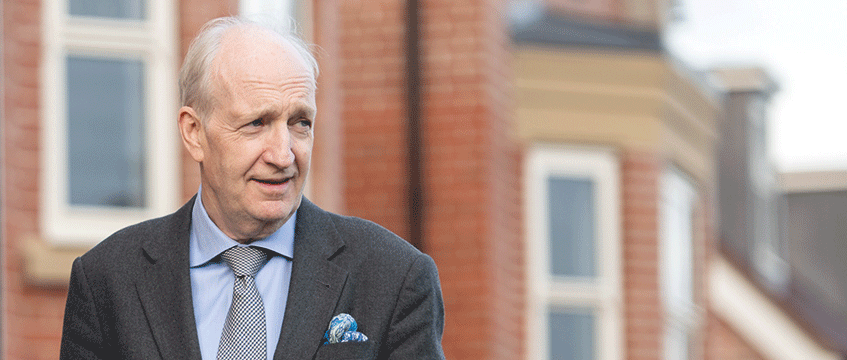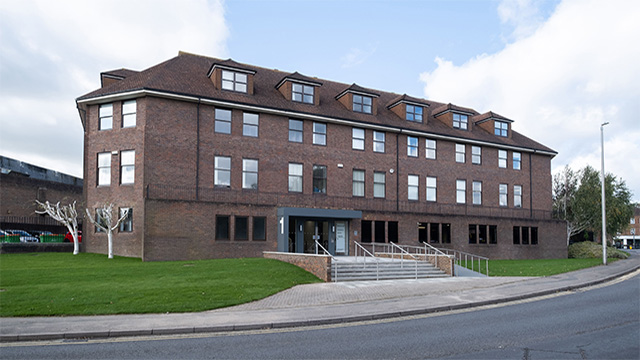Urban&Civic’s Nigel Hugill: ‘Our time has come’
Fr om buying businesses to being bought and now buying again, Nigel Hugill, chief executive of master developer Urban&Civic, knows the role of well-timed mergers and acquisitions in building out a group.
This summer’s acquisition of L&Q Estates is the second strategic land promotion business acquired by Urban&Civic following its takeover of Catesby Estates in 2015. Hugill says land promotion businesses are “compatible with our strategic sites – as a big master developer, we were providing land for the big housebuilders”.
“I am a great believer in structure,” Hugill says. “One of the changing elements in the land markets is, historically, a housebuilder will say to a landowner, ‘I will get the planning application and then, since I have got it, I want a right to buy the land on discount’. The problem with that was knowing the right land figure on which we should be applying the discount. The housebuilder will say, ‘It’s £300,000 per acre’ and the landowner will say, ‘It’s £500,000 per acre’.
From buying businesses to being bought and now buying again, Nigel Hugill, chief executive of master developer Urban&Civic, knows the role of well-timed mergers and acquisitions in building out a group.
This summer’s acquisition of L&Q Estates is the second strategic land promotion business acquired by Urban&Civic following its takeover of Catesby Estates in 2015. Hugill says land promotion businesses are “compatible with our strategic sites – as a big master developer, we were providing land for the big housebuilders”.
“I am a great believer in structure,” Hugill says. “One of the changing elements in the land markets is, historically, a housebuilder will say to a landowner, ‘I will get the planning application and then, since I have got it, I want a right to buy the land on discount’. The problem with that was knowing the right land figure on which we should be applying the discount. The housebuilder will say, ‘It’s £300,000 per acre’ and the landowner will say, ‘It’s £500,000 per acre’.
That forced the land promotion firms to “grow up”, Hugill says. “The landowners will go straight to somebody like Catesby, who will be selling straight into the market, so there would be no argument about what the price was. That’s why we bought Catesby and L&Q Estates. It was a very logical acquisition because it was like a mini-Urban&Civic.”
Green and grey
Urban&Civic, launched in 2009, has been established on a series of mergers and acquisitions. The company was initially a private equity-backed start-up that Hugill said he based on the “single presumption that we can’t meet demand in south-east England without building on large brownfield sites”.
Its first sites included the 1,432-acre Alconbury Weald development near Huntingdon in Cambridgeshire, a former airfield which was acquired from the Ministry of Defence in 2009 and on which the company delivered 5,000 homes and 3.1m sq ft of commercial space. The company’s second significant asset was the 1,170-acre sustainable urban expansion element of the Rugby Radio Station site, held in a 50:50 joint venture with Aviva. That scheme comprised 6,200 homes and 1.3m sq ft of commercial space.
“You have to build infrastructure-led schemes,” Hugill says. “That infrastructure includes the green as much as the grey.”
Building on large-scale brownfield sites within 100 miles of the M25 is the bedrock of the Urban&Civic business, which went public in 2014 through the reverse takeover of Terrace Hill.
Hugill says that deal gave Urban&Civic delivery capability. “The Terrace Hill business had been built around delivering large-scale supermarkets and things of that nature that were no longer in demand,” he says. “But the complicated thing was not building the supermarket, it was building the roundabout in front of the supermarket, the pipes and wires going into it. Those were very translatable things. That was the logic when we floated and, as we were able to raise private capital in 2008, we were able to raise public capital in 2014.”
Seven years later, in 2021, the Urban&Civic business was acquired by the Wellcome Trust and delisted.
[caption id="attachment_1257234" align="aligncenter" width="847"] Houlton School in Rugby was built on the site of the Rugby Radio Station[/caption]
A warm welcome to Wellcome
The Wellcome Trust is a global charitable foundation established in 1936, focused on health research.
Hugill says when the foundation approached Urban&Civic, it was no secret that he was on board with a deal.
“What I said to the chairman at the time was, ‘I am very keen to do this from a philosophical point of view, I think it’s a very good fit. Go and negotiate the price from a shareholder point of view, because this is something I am very keen to do, and I will follow what you and the board agree but this is a perfect fit for us’.
“So a price was agreed that gave the shareholders a good return to when we had floated the business. The acceptance was 99.7%, which tells you the shareholders supported the philosophy and the price.”
He adds: “They liked this business and didn’t want to see it taken off the public market, there was nobody else like us. The shareholders had said that they completely understood why [but] if this was a private equity buy, they wouldn’t accept it. But given that it was Wellcome, they knew we were not doing it to get rich – we were going to work for a charity.”
What attracted Hugill to Wellcome’s offer was the structure and alignment it offered to Urban&Civic’s existing business model. “Wellcome is very aligned with the way that the return profile in our business works. The return profile of our business is like a J curve or a hockey stick – it’s money out for anything between three and seven years and then money back for 15-20 years, and that is above the land price. But you have to be able to accommodate that front end that does not work great in terms of a private equity company. It’s not that great for a public company either, but it’s great in terms of a charity.”
Wellcome is looking ahead 10 years in terms of the scientific research it is supporting, Hugill says, meaning the next three years are giving little concern.
“What they are really interested in is money back in the long term. What they have done is paid £500m-£600m for the business and then invested further money, notably in the acquisition of L&Q Estates. If we had been acquiring L&Q as a public company we would have had a big old rights issue and that would never have been practical – the position for us as a part of the Wellcome group meant there was a security in terms of L&Q as vendor as they realised that we have to do our due diligence, and then we will make representations to our parent Wellcome.”
U&C post-L&Q
Urban&Civic now has 17 strategic sites across the country. When it launched, the plan was to build five or six large masterplan sites, but it ended up acquiring a new site per year until its acquisition in 2014, since which time the land deals have slowed.
Hugill says: “Logically that would then have increased, but it went the other way. It just shows that ours, like all other businesses in the sector, is motivated by external factors such as Michael Gove tearing up the rule book. It is planning-led and planning is politics-led. We are indisputably a planning-led business, so if politics is against large sites, it follows that there is not much you can do about it. And now the pendulum has swung back in the opposite direction.”
With the Labour government supporting planning policies and new towns, Urban&Civic is looking at further acquisitions.
“The L&Q acquisition has been very much as I hoped it would be,” Hugill says. “Our reputation was already established, but hopefully it was reinforced by the acquisition. What it did is give us a platform advantage because we have 17 sites supported by a triple A covenant and a very good reputation – all of that should provide us a competitive advantage.”
In Wellcome, Urban&Civic has shareholder support from the UK’s richest charity, he adds, and support from the government.
“When it comes to further projects, if there are to be new towns promoted or urban extensions then you’d have to think we would be on the shortlist and that is good enough. It’s a fair fight after that. There is a real sense in the way the business has come of age, but also our time has come.”
Main image © Urban&Civic; other images: © James Brittain











